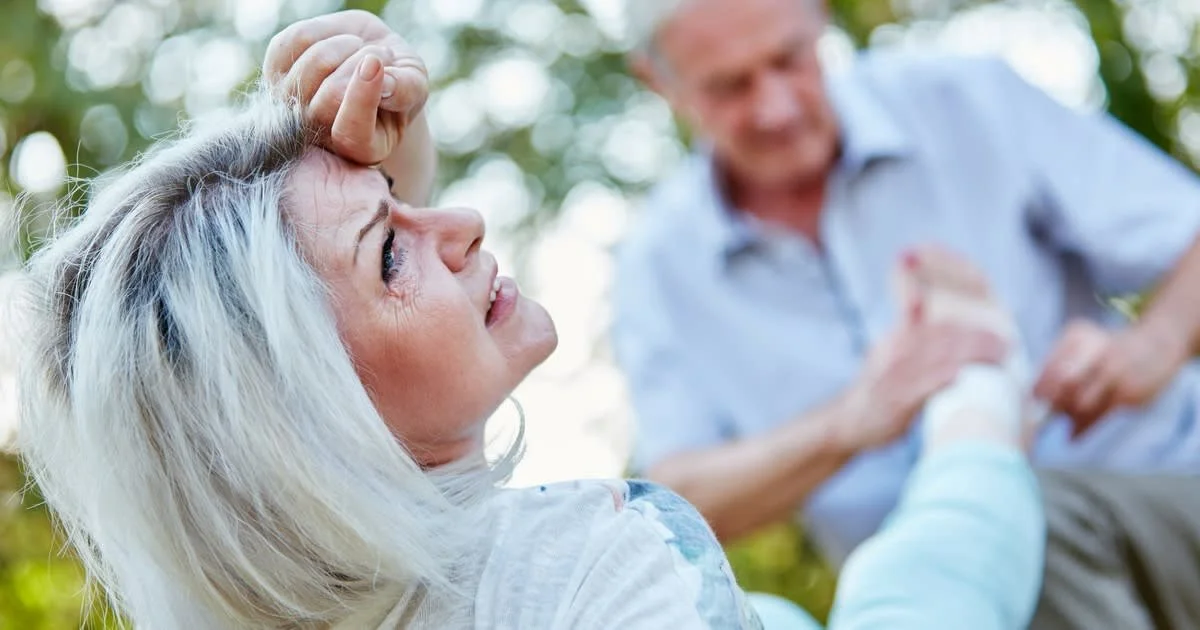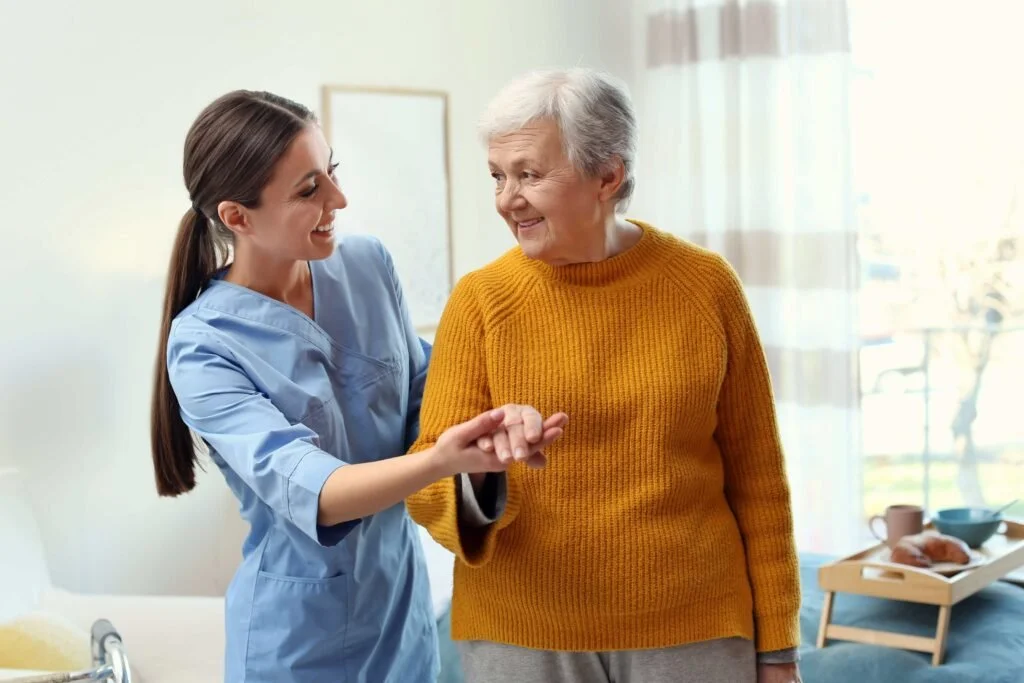Reducing Fall Risk Through Technology and Data Analytics
Mitigating the Risk of Falls for Your Community with the RAPID Fall Risk Analysis Program Receive an Accurate and Reliable Community Fall Risk Analysis
Download the RAPID Fall Risk Brochure, Click Here
FaLL
RISK
Receive a full analysis of your community plus guidance on how to mitigate the risk.
Should care providers and long-term care facilities be doing more to screen for fall risk in their residents?
New research indicates that fall screenings and risk prevention planning for communities and their residents could save the organizations millions of dollars, and possibly thousands of lives. Resident falls cost providers $380,000 per year, on average
““RAPID has been a game changer to our senior community. Balance and fall risk is the number one concern of our residents and with RAPID we now have the perfect tool to combat those concerns. We have already seen an 22% reduction in risk.”
”
Falls in Long Term Care Facilities are associated with costs of about $6,200 per resident per year.
The cost of a fall includes the resident’s need for an increased level of care to recover from the fall, additional administrative cost, and increased care staff cost. In 25% of falls, residents who return to the facility need an increased level of care.
The cost-effectiveness ratio of The RAPID Fall Risk Analysis Program is about a 20 to 1 ratio for every dollar spent to mitigate risk to an organization Per Resident.
In surveying more than 400 senior care executives and care providers, they reported that one in seven resident move-outs were related to falls. Assisted living communities and skilled nursing communities report an average of 260 resident falls per year per community, and 59% of respondents reported that a fall impacted their ability to provide residents with a high level of care.
Even more eye-opening are reported findings about the impacts that falls have on senior living communities, their revenue, their staffing, and the quality of care they can provide. Of the executives surveyed, 85% reported that falls have a significant impact on staff turnover in their communities. They also noted that two out of three prospective residents or families ask about how the community prevents falls, which highlights the fact that resident safety, particularly when it comes to falling, is a top concern in choosing a senior living community.
Falls also have a significant financial impact on assisted living communities and skilled nursing facilities. Across all of these facilities, falls have a direct annual cost of $380,000 per facility.
The financial impact varies according to the organization’s size.
Larger organizations of 20 or more communities face a fall-related annual cost of $712,000 per community.
The financial impact for smaller and mid-sized organizations is $158,000 per community.
Medicare paid approximately $28.9 billion, Medicaid $8.7 billion, and private or other payers $12.0 billion for nonfatal falls among those 65 and older.
The cost of falls
Providers with 20 or more assisted living communities experienced an average of 378 resident falls annually, compared with an annual average of 278 falls at skilled nursing facilities. One in five providers said that there are more falls in their communities today than before the pandemic.
Twenty-four percent of falls result in moving a resident to a higher level of care/service, according to respondents, with one in seven move-outs related to falls.
Mitigate Your Liability
The majority of liability claims against senior living and care settings come from falls, so operators that don’t have protocols in place to document interventions face a host of financial, reputational, medical, and litigation risks.
The average cost of liability claims across all aging services settings has increased since 2018, with assisted living claim costs continuing to exceed those in skilled nursing, according to a 2022 report from Chicago-based insurance company CNA. That same report showed that falls-related allegations are the most common in assisted living compared with other settings, with the average assisted living falls-related claims cost at $239,074 in 2021, up from $224,300 in 2018.
To combat these increasing costs, leveraging proven interventions and technology like the RAPID Fall Risk Analysis Program will keep your residents safe and can lower those costs plus improve the well-being of both residents and and your community.
Frequency, severity, and loss rate trends impacting senior living and long-term care providers.
Long-term care forecast 2023
0.4%
increase in claim frequency
3.5%
increase in claim severity
4.0%
increase in loss rates
Senior living forecast 2023
1.4%
increase in claim frequency
2.1%
increase in claim severity
3.5%
increase in loss rates
Among all claims paid by a senior living operator, more than 75% were the result of a resident fall, with an average closed claims cost over the last 10 years of $189,129, based on 2023 cost levels.
“Operators need to invest in risk management, falls management programs, and technologies to help manage and reduce falls.”
- John Atkinson, Marsh Insurance, co-leader of senior living and long-term care
HOW RAPID CAN HELP
Understand Fall Risk
A RAPID fall risk analysis offers senior living organizations a picture of the risk to their entire community and each resident, along with solutions to reduce the risk.
Create a Tailored Care Plan
A fall risk community screening allows RAPID to create a tailored care plan for each of the residents living under your care, based on factors like balance, functional capacity, and gait impairments.
Implement Proactive Care
A comprehensive analysis enables us to create preventative measures for your entire community by identifying factors that could increase your resident’s risk of falling and by implementing preventative measures.
Ongoing Tracking
With RAPID’s Community Fall Risk Screening and quarterly tracking program, your community will be one step ahead of the next residents fall.
MAKE FALL PREVENTION A PRIORITY
The RAPID Fall Risk System — A Fall Risk Community Analysis Tool
Pictures courtesy of our partner: Majestic Care
RAPID handles all the heavy lifting…
The RAPID Fall Risk Analysis Program is completely administered by trained professionals who administer all of the tests and procedures for your community. There is no obligation to buy any technology beyond this specialized service. Once testing is complete your organization will receive a comprehensive breakdown of risk based on the total community as well as for each resident. You will also receive a call to action plan for each resident to improve your residents and community’s overall risk.
Our AI-Driven Machine Learning Analytics System
The RAPID Fall Risk System is an advanced fall risk analysis tool. It is designed to evaluate your resident’s balance and fall risk by measuring their postural sway, and horizontal balance-seeking movements, wherein their muscles and sensory system work together to help keep their body upright.
The RAPID Fall Risk System provides objective, accurate, and reliable measurements to evaluate your resident’s fall risk. After evaluation, the RAPID program offers six comprehensive results for interpretation, including:
Community Baseline: The baseline is the reference point which subsequent community and individual measurements or evaluations are compared against as well as comparatives to normative for your population.
Quarterly Post-Baseline: Post-baseline is the analysis conducted after the baseline has been established. It encompasses the evaluations, measurements, and observations made after the initial baseline analysis.
Percentile Ranking: Percentile ranking is a statistical measure used to compare your residents or their risk level in a specific reference group. For example, if your resident has a fall risk percentile ranking of 75%, they have a lower fall risk than 75% of the individuals in the reference group.
Fall Risk Analysis: Fall risk analysis is the evaluation of your resident’s likelihood of experiencing a fall. It includes the examination and identification of different factors that contribute to an increased risk of falling.
Fall Screens and Tests: RAPID follows the CDC’s recommendation through the STEADI program for vetted tests and screen recommendations plus adds sensory screening and our one-of-a-kind Clinical Test of Fall Risk. By condition plus composite scores are computed utilizing our specialized algorithms to calculate and deliver accurate and reliable metrics.
Advanced Metrics: Advanced metrics are sophisticated measurements or parameters that go beyond traditional or basic analysis that measure step length, stride time, sway velocity, and center of pressure excursion.
After an initial analysis, additional fall risk tests administered quarterly can help determine whether each resident or the entire community is improving their risk of falling.
We partner with your insurance broker company
We will work with your current senior living insurance and risk management broker as we have the experience to deliver innovative solutions to senior living organizations across the nation. By leveraging our industry expertise and extensive network of insurance partners, we work hand in hand to ensure your organization has the right coverage in place to identify risk, mitigate risk, protect assets, and enhance overall quality of care.
FIND ANSWERS
Fall Risk Test & Analysis FAQs
What is a fall risk analysis?
A fall risk analysis is used to evaluate if an individual or an entire community has a low, moderate, or high risk of falling.
If the fall assessment finds a high risk, the RAPID System will suggest measures to take to create a prevention plan. This plan includes strategies to improve their physical strength and balance.
Why does my community need a fall risk analysis?
Fall risk tests are conducted to help organizations stay informed about potential risks to their residents and make sure that prevention methods are put into place as needed.
According to the Centers for Disease Control and Prevention, falls are the leading cause of injury among the elderly in the United States.
As individuals age, their risk of falling increases due to a wide range of factors, including reduced muscle strength, balance issues, vision changes, and side effects from fall risk medications.
Falls in the elderly can result in serious injuries, such as fractures or head trauma, and can also lead to a fear of falling, which in turn may limit their hobbies and reduce their quality of life.
Are the results of the RAPID Fall Risk System accurate and reliable?
Yes. The RAPID System utilizes sophisticated technology, such as sensors, AI-driven algorithms, and machine learning to gather and analyze data about residents’ balance and provide accurate, reliable insights.
Our RAPID healthcare professionals will administer all tests and procedures and deliver comprehensive reports to help your community make better choices for your resident’s care.
We aim to create a detailed picture of your community’s overall health and potential fall risk. We develop a personalized fall prevention strategy for each resident that focuses on enhancing their safety, preserving their independence, and improving their quality of life.
Become a Provider
Are you a PT Clinic, Home Health Professional, or Wellness Director for a community, we offer a full RAPID Testing System Kit for sale. Become a licensed provider in our network. Share in the revenue generated by this one-of-a-kind service.
















